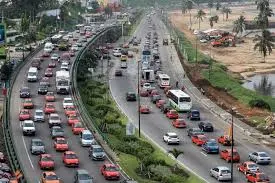Ivory Coast: lagoon transport, a solution to traffic jams
According to a World Bank report on the Ivorian economy, in 2019, more than ten million trips were recorded every day in the capital, Abidjan. The study also shows that each household spent around $2 daily and lost over 3 hours on the roads that year.
Traffic jams therefore cause users to lose a great deal of money and cause a drop in GDP growth.
Faced with the difficulty of traffic in Abidjan during rush hours, an alternative is increasingly used, it is the lagoon route.
''I chose to take the lagoon route to avoid traffic jams and is faster. I'm from Azito and with the boat it's a 30 minute ride. With traffic jams, I can take 1h, 1h30 or 2h. It depends. ''
“With the traffic jams, it's really not easy. It's not easy to get to an appointment on time, whereas on the lagoon route, I think that with other opinions, we can agree on the fact that it's more easy. Once the boat is there, more easily... There is no traffic jam on the sea so here is why I use this means of transport."
Three lagoon transport operators are trying to meet the needs of the population. SOTRA, CITRANS and STL of the SNEDAI group transport hundreds of thousands of Abidjan residents every day against an estimated demand of 225,000 travelers per day in 2020.
''You have a lagoon that stretches from Adiaké to Grand-Lahou. Imagine the potential in terms of lagoon tourism. We need to develop lagoon tourism. Ivorians must learn to rediscover their country through the lagoon and that is a challenge that we want to take up,” said Désiré Messou, STL Managing Director.
After the lagoon sector was liberalized in 2014, and despite the presence of these three operators, mobility needs are still significant.




